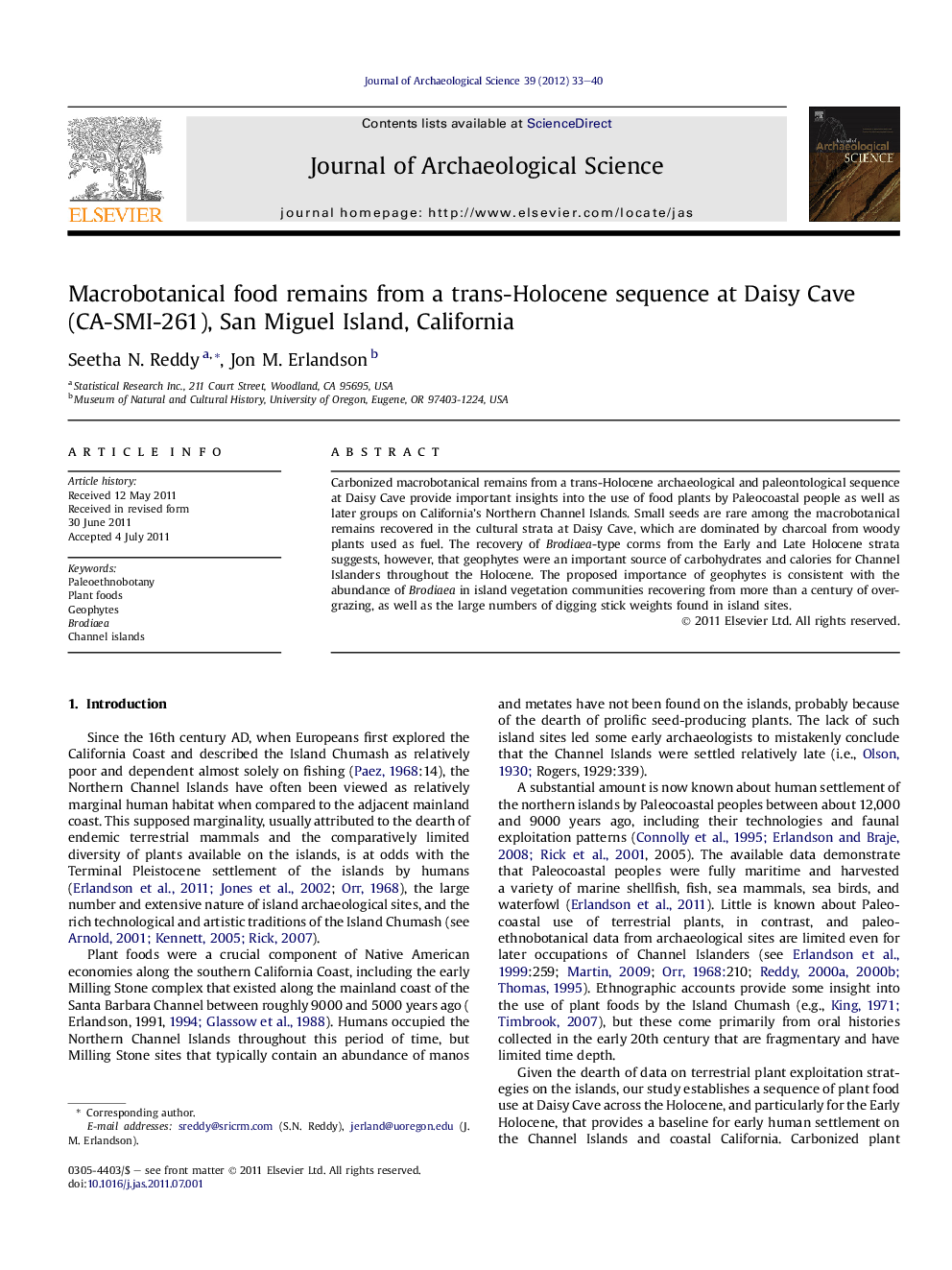| Article ID | Journal | Published Year | Pages | File Type |
|---|---|---|---|---|
| 1035917 | Journal of Archaeological Science | 2012 | 8 Pages |
Carbonized macrobotanical remains from a trans-Holocene archaeological and paleontological sequence at Daisy Cave provide important insights into the use of food plants by Paleocoastal people as well as later groups on California’s Northern Channel Islands. Small seeds are rare among the macrobotanical remains recovered in the cultural strata at Daisy Cave, which are dominated by charcoal from woody plants used as fuel. The recovery of Brodiaea-type corms from the Early and Late Holocene strata suggests, however, that geophytes were an important source of carbohydrates and calories for Channel Islanders throughout the Holocene. The proposed importance of geophytes is consistent with the abundance of Brodiaea in island vegetation communities recovering from more than a century of overgrazing, as well as the large numbers of digging stick weights found in island sites.
► Macrobotanical analysis reveals the Early Holocene use of corms and tubers as food on San Miguel Island, California. ► First study of macrobotanical remains from a deeply stratified cultural sequence from the Channel Islands. ► Corms continue to be an important food into the Late Holocene. ► Small seeds did not play a major role in plant diet at Daisy Cave on the island.
